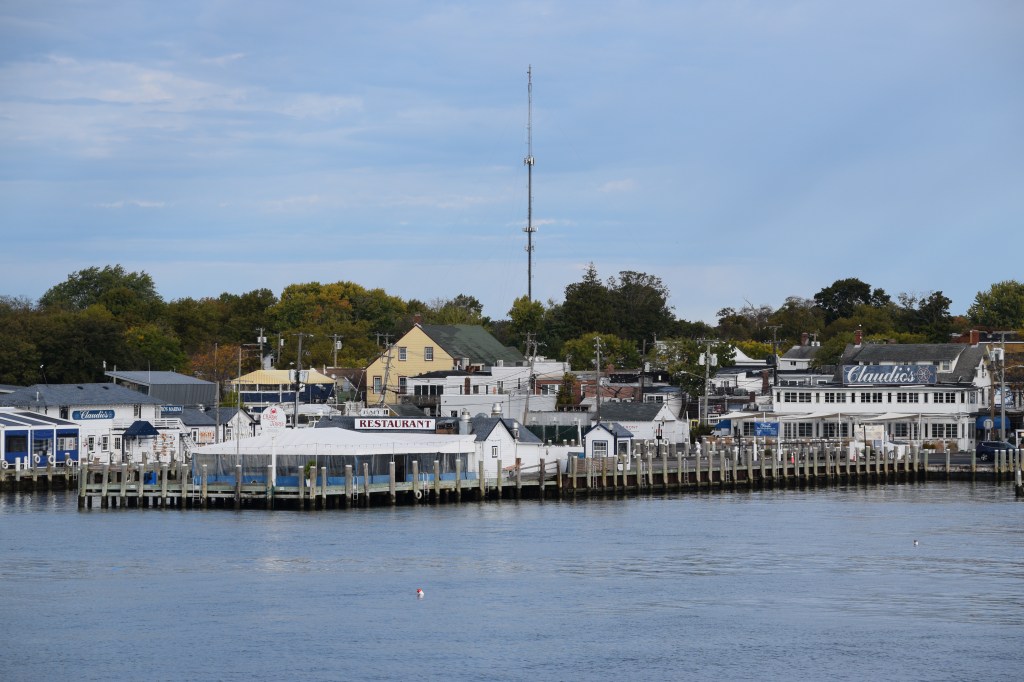April Gornik’s Miracle: Leading the Drive to Save Sag Harbor Cinema

There are countless people who love Sag Harbor and who have joined the community efforts to keep it the same in a changing world. But after the fire that destroyed the Sag Harbor Cinema in the center of town not quite a year and a half ago, there was one person who came forward from the crowd and stepped up to the plate to spearhead the restoration of that building and its iconic sign: landscape artist April Gornik.
It was an enormous undertaking. First, you’d have to buy the property from its owner, and he wanted $8 million. Then you’d have to get an architect, then you’d have to get it all past the Village planning board and finally you’d need to get a building permit and raise maybe another $5 million to finance the reconstruction.

April Gornik? Hey, no problem, people told me. If anybody can lead the charge to get this done, it’s her.
Well, here’s what Gornik and the Sag Harbor Partnership have done so far. They’ve incorporated the new theater organization as a nonprofit, convinced several hundred people to part with money to create the wherewithal to buy the property—a few gave half a million, one gave a million—and they gave the money to the seller just days before the deadline the seller set—December 31, 2017, after which he’d put the place up for sale to others. They’ve signed the papers so the theater organization owns the place, got a full set of plans from the architect, got approvals for preliminary permits from the Village and are now embarking on the job of raising another $5 million to pay for construction.
I asked Gornik when they will break ground.
“I think it will be sometime in June,” she said.

There was not a moment’s hesitation. Her response could not have been more nonchalant if I’d asked her if she’d like a cup of coffee. She’d just given the $8 million to the seller. The ink wasn’t even dry on the purchase documents.
“How will you do that?”
“It will be more donations. But also we are applying for grants. I think we might be able to get donations for lumber and other building materials. And I think we can find a builder who will defray some of the costs. Everybody loves Sag Harbor.”
“What about permits? That can take years.”
“If the Village wants something changed, they tell us and we work it out. This is not a for-profit situation. It’s for the town. We’re all on the same page. We have an architect, Allen Kopelson, who also loves Sag Harbor. He’s been doing the plans gratis. He goes to the meetings. He’s been there with us from the beginning. We think another three months.”
I’d never had this much of a conversation with Gornik before. She is fearless. She is calm and upbeat. All of this is going to happen.

“Why are you doing this?” I asked.
“I think rebuilding the theater and putting the old sign back up is a good way to save the village. That’s the goal.”
Yes. The other villages in the Hamptons grow and go upscale. Sag Harbor looks just about how it looked back in the 1930s, and it’s being kept that way. The local pharmacist. The local ice cream store. The five and dime. Emporium Hardware. The Long Wharf.
When done, the cinema will have three theaters, all different. The largest will seat approximately 250 people. A second theater will have 150 seats. Between them will be the projection booth, a takeout café and a small candy and popcorn counter (the popcorn stand will be named for donor Billy Joel). Upstairs there will be a 30-seat screening room that could be rented out in the summertime—there is a demand for this—and it could also double as a lecture or meeting hall. And on the roof, it’s hoped they could have another meeting space. It would be only 450 square feet in size and far enough back from the iconic sign so as not to be visible from the street.
“When would you expect this would be ready for occupancy?”
Pause.
“Should be a year and a half.”









